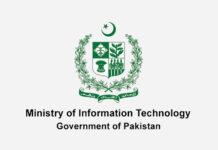KARACHI: The State Bank of Pakistan (SBP) has issued its annual flagship publication, the Financial Stability Review (FSR) for the calendar year 2022. The review presents the performance and risk assessment of various segments of the financial sector including banks, non-bank financial institutions, financial markets, financial market infrastructures and non-financial corporates.
Pakistan’s Economic Challenges
Pakistan’s economy weathered a stormy year, grappling with pre-existing imbalances that were further aggravated by an unfavorable external environment. A combination of domestic challenges, including fiscal and current account deficits, soaring inflation, catastrophic flooding, and delays in IMF program reviews, coupled with global hurdles such as skyrocketing commodity prices and tightening monetary policies by major advanced economies, resulted in a deteriorating macroeconomic landscape. The Pakistani Rupee depreciated significantly, and average inflation reached 19.9% due to higher international commodity prices and supply side shocks from unprecedented rains and flooding in Q3CY22. Fiscal balance was also strained by lower tax revenue and increased debt servicing costs, leading to increased government reliance on bank borrowing. International credit rating agencies downgraded Pakistan’s sovereign credit rating.
To address rising imbalances, the SBP and the government implemented several policy interventions, including increasing the policy rate by 625 basis points to 16.0% during CY22 and implementing macroprudential measures for consumer financing and administrative measures to manage external imbalances.
As a result of policy tightening and demand contraction, the current account deficit improved towards the end of the year, and business activity slowed down. The Business Confidence Index (BCI) declined to its lowest level since April 2020, and the average output of Large Scale Manufacturing (LSM) decelerated to 6.0% in 2022 compared to 17.5% in 2021. The estimated economic growth for FY23 was revised down to 0.29% from 6.1% in FY22.
Domestic financial markets experienced significant volatility and stress in CY22. The FX market faced pressure due to delays in completing IMF program reviews and reduced external inflows. Money market stress was observed due to increased government borrowings and private sector credit growth, while deposit mobilization slowed down. However, SBP’s liquidity management helped mitigate PKR liquidity pressures. The equity market remained bearish for most of CY22, with the KSE100 index falling by 9.4%.
However, amidst these trials, the financial sector emerged as a resilient force, showcasing commendable performance. The sector’s asset base expanded by an impressive 18.3 percent in 2022, with the banking sector playing a pivotal role in driving this growth.
Banking Sector Performance
Despite challenging conditions, banking sector remained steady during CY22. The asset base grew by 19.1%, driven by increased investment in government securities. Private sector advances also grew, albeit slightly slower, due to higher input prices. However, banks relied more on borrowings as deposits decelerated.
Credit risk in the banking sector was contained in CY22. Non-performing loans (NPLs) grew at a slower pace than advances, and banks maintained adequate provisions. The gross NPL ratio decreased to 7.3%, while the net NPL ratio slightly increased to 0.8%. This can be attributed to banks’ preference for creditworthy firms and the corporate sector’s strong liquidity and capital cushions.
Market risk profile of banking sector presented a mixed picture during CY22. While interest rate risk mainly drove the overall market risk, equity and FX risks remained subdued due to regulatory standards. During the year, banks increased their holding of government securities, particularly floating rate instruments to sustain the impacts of rising interest rates.
Banks’ asset-based liquidity indicators remained satisfactory. However, market liquidity conditions remained under stress due to slower growth in deposits with higher demand for bank credit particularly from the government.
Profitability in the banking sector increased in 2022, primarily due to interest income from investments in government securities. However, higher interest expenses and tax charges limited the bottom line. Return on asset (ROA) improved slightly to 1.01%, and return on equity (ROE) increased to 16.9%. The capital adequacy ratio (CAR) improved to 17.0%, well above the regulatory requirement of 11.5%.
Islamic Banking Institutions (IBIs) continued their growth momentum in 2022, with a 29.6% expansion in their asset base. Funding through deposits remained robust, and asset quality indicators improved compared to conventional banks.
Performance of other Financial Institutions
Microfinance banks (MFBs) faced ongoing challenges from the COVID pandemic, worsened by deteriorating macroeconomic conditions and flooding in Q3 2022. Asset quality indicators deteriorated, with the gross NPL ratio rising to 6.7% in 2022. MFBs incurred a loss of Rs 17.2 billion due to high provisioning and operating expenses compared to limited incomes. The overall capital adequacy ratio (CAR) of MFBs fell to 10.9% by the end of 2022.
Development Finance Institutions (DFIs) showed strong growth in 2022, with their balance sheet expanding by 165.7%. This was driven by investments in government securities financed through increased borrowings. Advances also experienced noticeable growth, leading to improved asset quality indicators. Earnings improved, and CAR remained strong at 36.5% despite a slight moderation.
Non-Bank Financial Institutions (NBFIs) witnessed a 26.7% growth in 2022, primarily driven by the mutual funds industry, which constitutes the majority of the sector. Money-market and income funds showed significant growth in a high-interest-rate environment, while equity funds faced redemptions due to poor performance in the equity market. The Real Estate Investment Trust (REIT) segment also experienced notable growth. The lending segment of NBFIs expanded strongly, supported by investment finance companies (IFCs) and nonbank microfinance companies, however, latter faced increased stress due to heavy flooding in Q3 CY22.
The insurance sector posted 14.8% growth in 2022, mainly driven by the life insurance segment, which dominates in terms of assets and premiums. While the life segment faced increased group claims and individual surrenders, investment income contributed to the bottom line. The non-life segment experienced some deterioration, with increased claims due to flooding and natural disasters, as well as higher costs for repairing fixed assets due to inflationary pressures.
Financial Market Infrastructures (FMIs)
The Financial Market Infrastructures (FMIs) remained robust and resilient during CY22. E-banking transactions continued to gain traction reflecting customers’ increased preference for e-banking. The performance of PRISM – large value payment system – in terms of business activity moderated owing to economic slowdown. Moreover, the SBP implemented Raast’s second phase during CY22, enabling instant and free Person-to-Person (P2P) fund transfers. At the same time, a comprehensive licensing and regulatory framework for digital banks was also issued to promote digital financial services in a prudent manner. Moreover, a number of improvements were made in the cybersecurity framework. It is important to note that the growth of digital financial services (DFS) has accelerated over the last few years. Realizing the significant role that technology and innovation can play in revolutionizing the provision of financial services, SBP and policymakers are strategizing to leverage the technology to promote policy objectives of inclusion, efficiency and convenience of customers in a sustainable manner.
Looking ahead
Financial stability depends on evolving international and domestic conditions. Ongoing conflicts, sticky core inflation, and low global economic growth may impact Pakistan’s external account, inflation, and economic activity. While the current account deficit has narrowed, the overall external account position remains stressed. High inflation and delays in the IMF program pose challenges to the economic outlook, leading to slower economic growth in FY23.
In the latest Systemic Risk Survey (SRS), market participants identified political uncertainty, foreign exchange rate risk, inflation, and energy crisis as leading risks to the financial system.
The banking sector faces challenges related to borrower repayment capacity and asset quality. The business model of Microfinance Banks (MFBs) needs improvement, and earnings from advances and non-interest incomes may moderate due to subdued economic activities and increased risk aversion towards private sector credit. Increased exposure to the public sector has implications such as crowding out private sector credit and repricing/revaluation risks. Efforts are needed to mobilize deposits for liquidity needs, and the government should diversify funding sources and focus on fiscal consolidation. Policy measures are necessary to boost productivity, export competitiveness, and debt sustainability for economic revival.
The dynamics of financial stability are influenced by uncertain factors. The SBP conducts regular scenario analysis to predict banking sector health indicators. Recent stress tests indicate a potential increase in non-performing loans (NPLs), but the sector is expected to remain resilient with sufficient capital, liquidity, and risk management capabilities. The US banking sector’s turmoil and climate change risks in Pakistan highlight vulnerabilities. Additionally, digitalization brings technology and cyber risks. The SBP acknowledges these risks and is prepared to take timely measures to preserve financial stability and support economic growth by ensuring the smooth provision of credit and financial services.
























